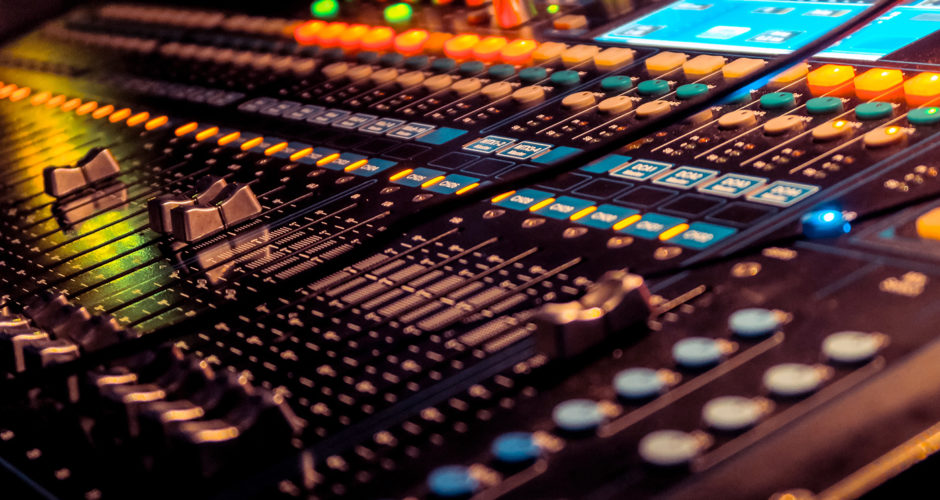
Don’t Forget the Sound
August 3, 2018 |David Graf
Think for a moment about the importance of sound in your church auditorium. What are the main components of your worship service? The answer will likely include teaching the Word and worship.
These are not primarily visual aspects, but auditory. Therefore, it could be argued that sound design is the most critical element of your building. If you design a beautiful auditorium with comfortable seating and good views of the platform but can’t clearly understand the words that your pastor is saying, you have failed in your design. Likewise, if you can’t hear your worship team, or worse, if you can hear them quite well but can’t understand the words they are singing, you have failed. Why then is sound design often treated as an afterthought?
It’s important to understand that quality sound is not only about volume – it’s about clarity.
Inexpensive sound systems can fill your auditorium with a lot of noise. Quality sound systems provide amplification as well as crystal-clear definition. In other words, not only can you hear the sound of someone’s voice, you can understand precisely each and every syllable of what they say or sing. This makes a big difference when trying to concentrate on a sermon or enter into worship. People are much more willing to listen carefully when it doesn’t take a lot of effort on their part.
Here’s how sound design and equipment planning works with most churches constructing a new building. It usually takes over a year to design a building. The focus during that planning period naturally remains on the structure itself. The details can be overwhelming and it takes a lot of time and effort to produce a quality design. In the weariness of this significant undertaking, sound equipment is one of the categories put off to the end. It seems to be something that isn’t integrated into the building itself; it’s something that can be added later or you can just make do with what you already have. Also, your building committee can grow weary of planning and it may seem as if the job is never going to be completed. The feeling becomes, “Let’s just get the building built, then we can think about sound equipment after the dust settles.”
This thinking is a big mistake for a couple of reasons. First, despite popular opinion, sound design and equipment are very much integrated components of the building itself. One church architect points out that you can design a building without considering the sound, and then spend hundreds of thousands of dollars on sound equipment and sound baffling to overcome the acoustical deficiencies of the auditorium. Or you can do computerized sound design at the time you’re designing the building itself and spend about $5,000 on strategically placed sheetrock to eliminate most of your sound challenges. It is always wise, and somewhat expensive, to invest in quality sound equipment, but you can save a tremendous amount of money and frustration by investing in a quality sound design company to analyze your building plans and avoid future problems during the design phase.
The second reason it’s a mistake to put off sound design is that you will probably not allocate enough money to provide the necessary sound equipment at the end of the project if you don’t budget for a specific design from the beginning. Again, it’s easy for the building committee to be so focused on the building itself that it begins to “gut” the sound budget to meet other priorities. If all you have is a sound “allowance,” it becomes easy to do this. If, on the other hand, you have a very specific line-item budget for sound, those funds will probably remain intact.
Unless you have a sound technician in your church that does sound design for a living, we do not recommend that you have that person plan your sound equipment. He or she can certainly help with input on the numbers of necessary channels, for example, but the design should be left to a professional. When it comes to hiring a company, make sure they are adept at doing computerized sound design and that they are able to provide guidance for the actual building design. Furthermore, make sure they have extensive experience working with churches, and definitely ask for references from other churches and follow up on them. This can save a lot of money and frustration.
Where are sound levels and quality most important? Obviously, they are most significant in the seating section of your auditorium.
One other important sound topic is the placement of the sound booth. Where are sound levels and quality most important? Obviously, they are most significant in the seating section of your auditorium. Why, then, do churches often put sound booths 10 to 20 feet higher than the seats? Is it because they’re concerned about the sound quality in the ceiling? Or why is it that they put sound booths in a separate room at the back of the auditorium with just a little window providing access?
The best location for a sound board is right in the center of the auditorium.
The best location for a sound board is right in the center of the auditorium. This is probably not a viable option in most churches, although I believe it is becoming more acceptable, especially if you have a contemporary service and design an industrial-looking auditorium with exposed ceiling, etc. If this is not an option, you will still do well as long as the booth is kept in the actual auditorium and at floor-level. Obviously, closer to center is better than in a corner, but even the corner will work in a well-designed room.
For help in checking references for sound design vendors, contact us to get customizable templates for your use. It would be worth your time to send these to every church reference provided by your potential sound designer, or at least those that have been served within the last few years.

David Graf
Vice President for Lending
